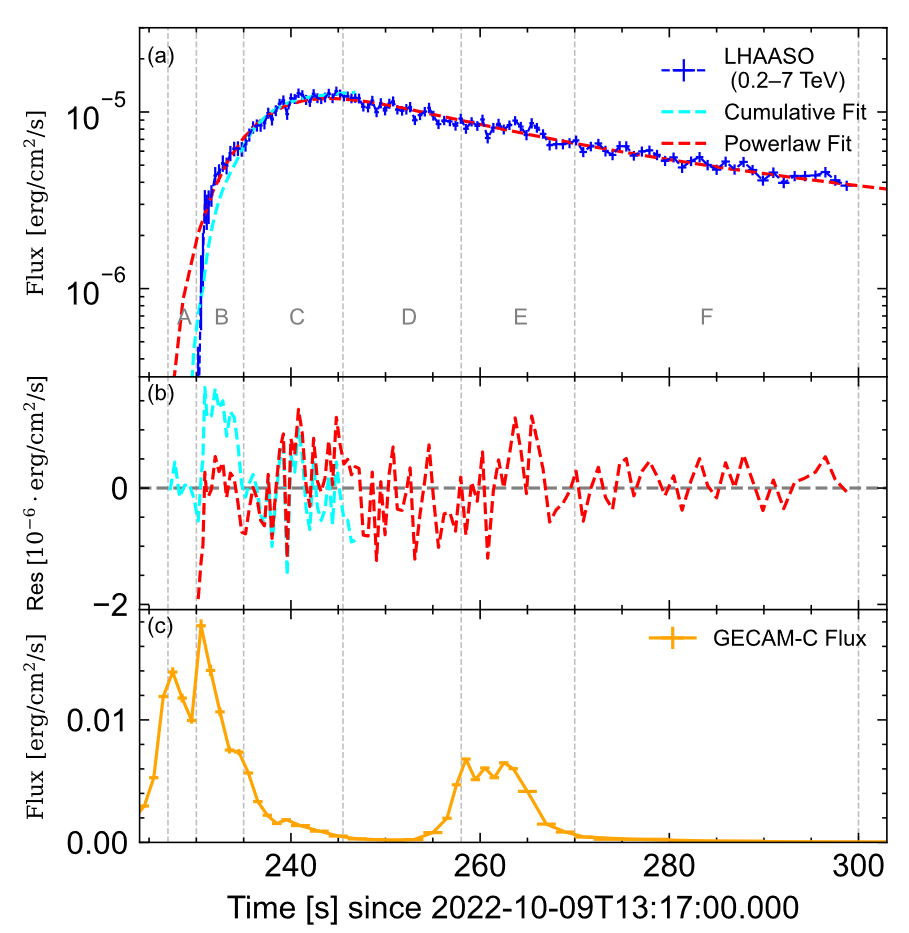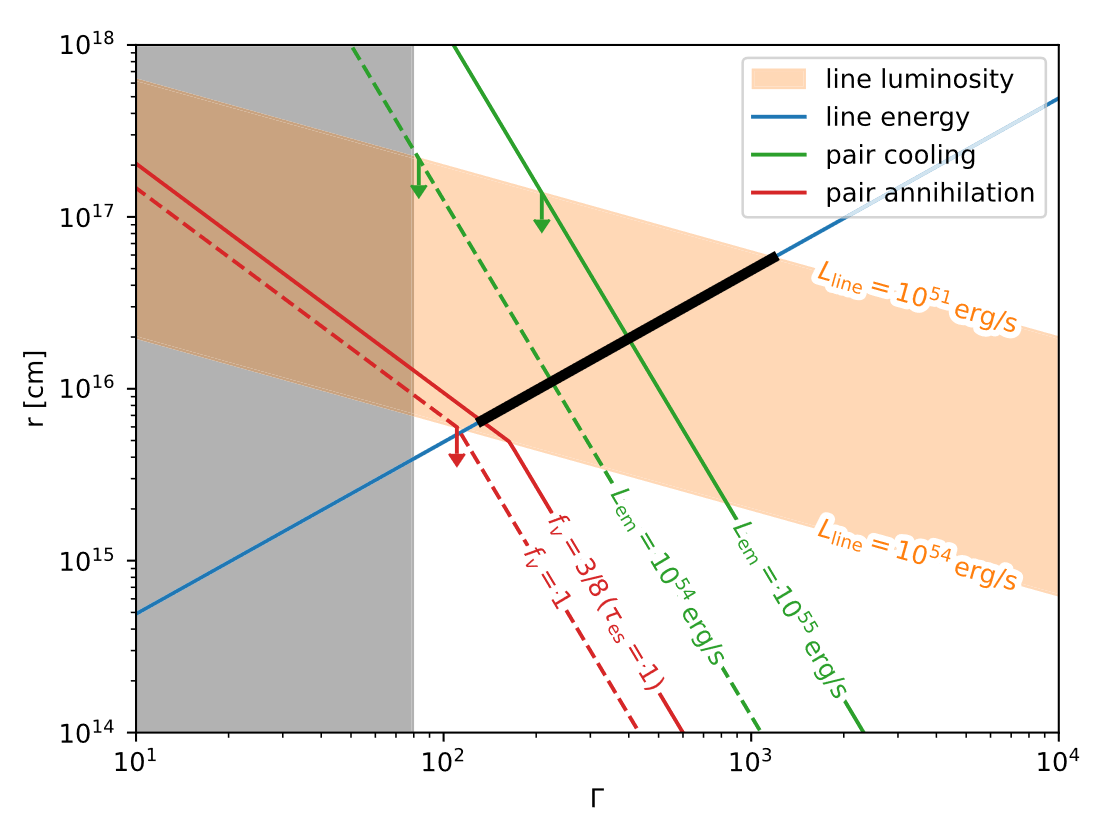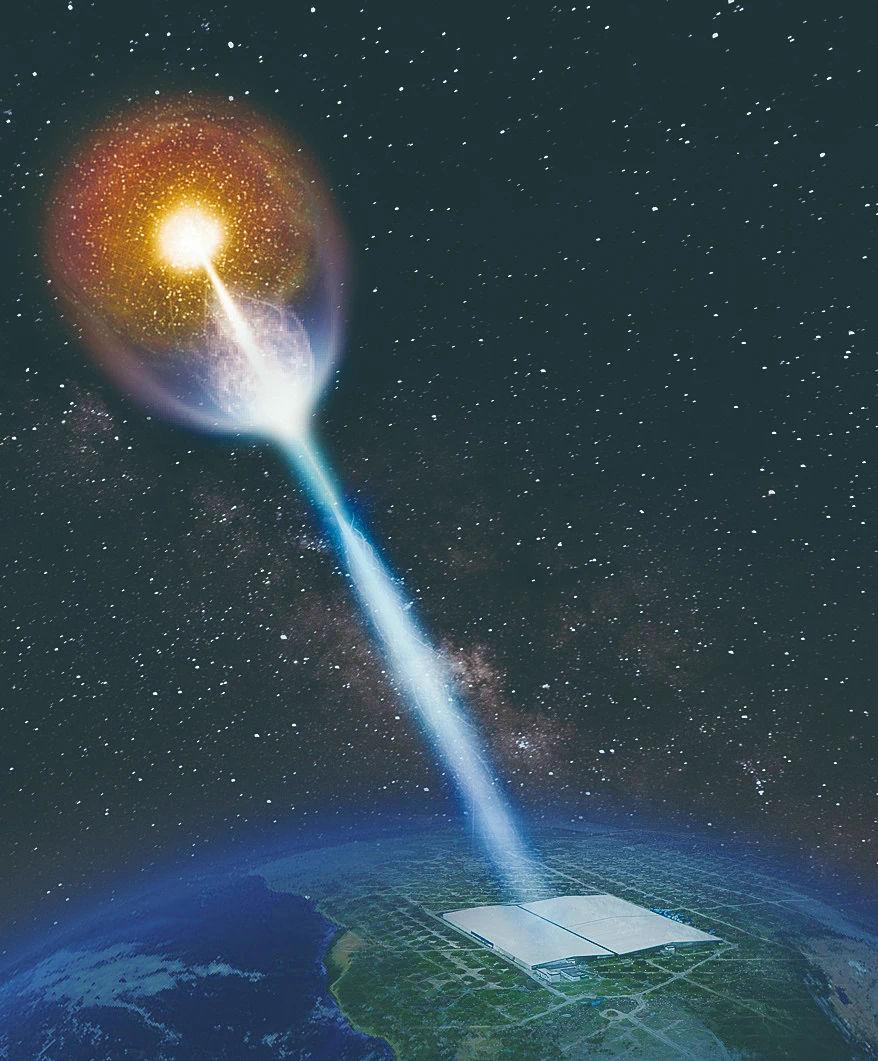Gamma-ray bursts (GRBs) are intense cosmic explosions believed to be powered by ultra-relativistic jets launched from the central engine. However, the nature of the jet is poorly known. GRB 221009A, the brightest GRB ever observed, has provided crucial insights into the physics of these jets through its multi-wavelength emissions, as well as a prominent MeV emission line.
Recently, a team of astrophysicists, including Dr. Haoxiang Lin and Prof. Zhuo Li from the Kavli Institute for Astronomy and Astrophysics (KIAA), Peking University and the GECAM (The Gravitational wave high-energy Electromagnetic Counterpart All-sky Monitor) team led by Prof. Shaolin Xiong from Institute of High Energy Physics (IHEP), Chinese Academy of Sciences, has two groundbreaking papers about GRB 221009A, recently published in The Astrophysical Journal Letters, shedding new light on the physics of GRB jets.

Schematic of the BOAT GRB221009A observed by Insight-HXMT and GECAM-C.
In the first study, the relationship between the keV-MeV prompt emissions captured by the Chinese space satellite GECAM and the TeV emissions observed by the ground-based Large High Altitude Air Shower Observatory (LHAASO), was explored. The research revealed a close correlation between the light curves of these emissions, with a measured time delay of approximately 4.45 seconds of the TeV emission. This discovery allowed the team to model the continuous energy injection into the external shock by the jet carrying energy from the central engine, deriving the jet's Lorentz factor ~700 from the observed time delay.

The prompt keV-MeV emission detected by GECAM-C (orange curve) shows strong correlation with the TeV emission detected by LHAASO (blue curve) [1].
In the second study, data from GECAM and other telescopes revealed a series of bright MeV emission lines from GRB 221009A. These lines, evolving over time, provided crucial evidence for a magnetically dominated jet, a significant advancement in our understanding of GRB jet physics. The time evolution of the line energies follows a power-law index of −1, which is identified as the "High-Latitude Curvature Effect": when a GRB emitter stops emission abruptly, the observer receives rapidly fading emission from high latitudes with respect to the line of sight. The analysis further suggests that the emission region is located at a distance larger than 1016 cm from the source, and the narrowness of the line width, 10%, indicates rapid cooling of pairs within the jet, leading to the conclusion that the magnetic field energy density is much higher than that of the prompt gamma-ray energy density.

Theoretical modelling of the MeV emission line from GRB 221009A put stringent constraints on the Lorentz factor of jet and the size of emission region [2].
These studies underscore the pivotal role that Chinese telescopes like GECAM and LHAASO are playing in advancing our understanding of GRB physics. The conclusions drawn about the Lorentz factors and magnetically dominated jets represent a significant leap forward in our comprehension of the mechanisms driving these powerful cosmic events.

LHAASO observes BOAT GRB 221009A (from IHEP).
References:
[1] Yan-Qiu Zhang et al. 2024, ApJL, 972, L25.
https://iopscience.iop.org/article/10.3847/2041-8213/ad6df8
[2] Zhen Zhang et al. 2024, ApJL, 973, L17.
https://iopscience.iop.org/article/10.3847/2041-8213/ad758e